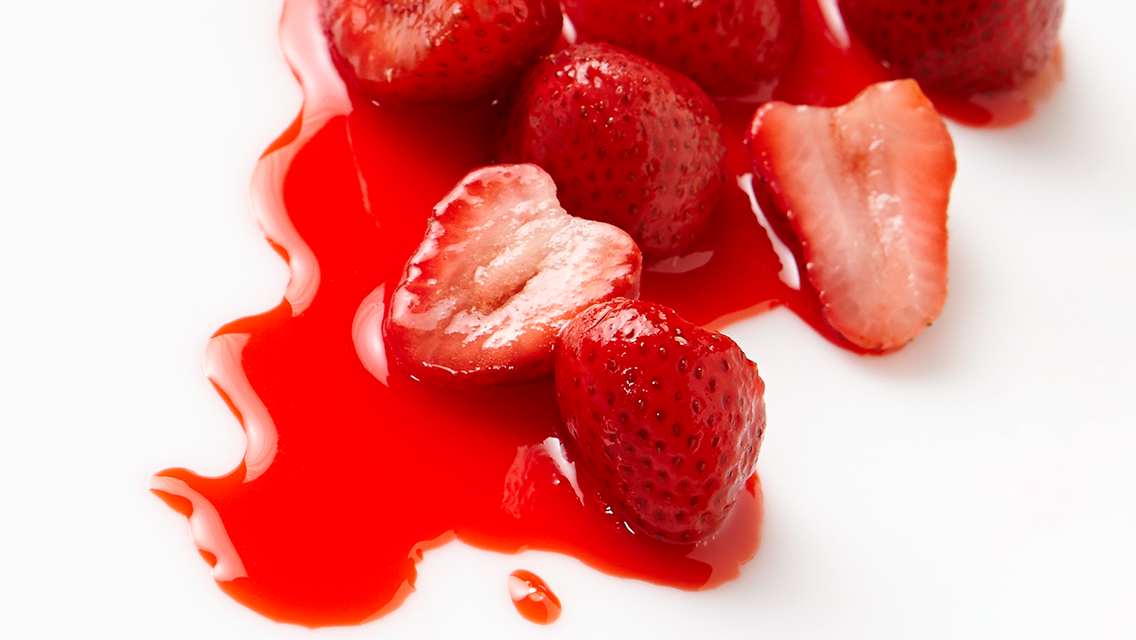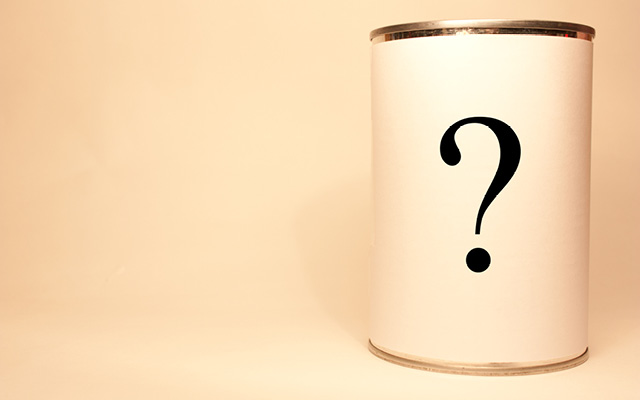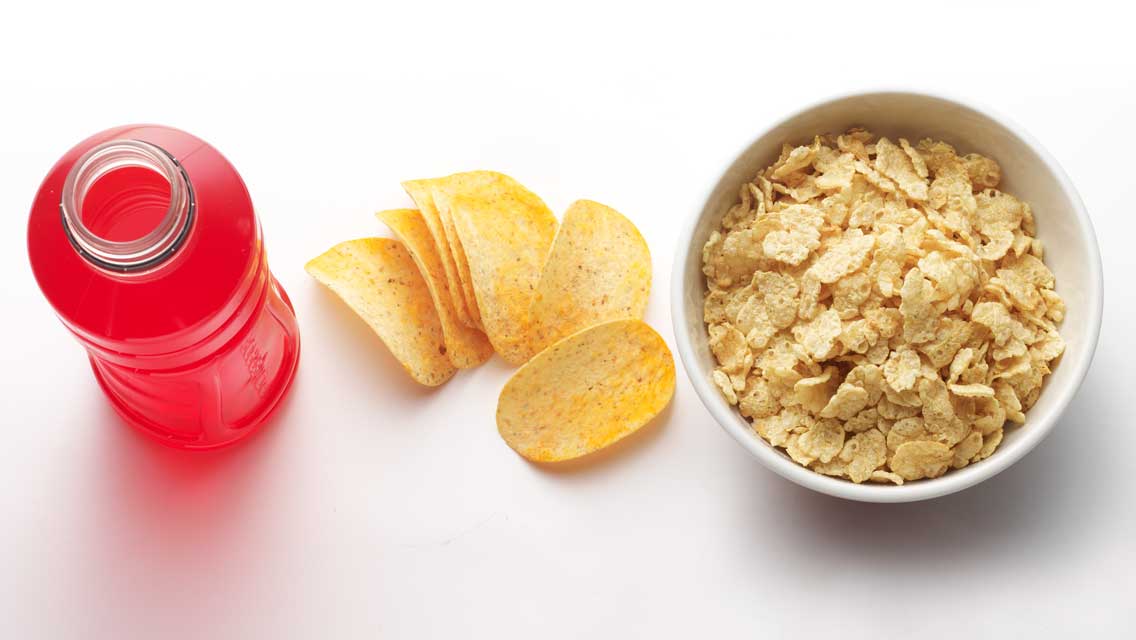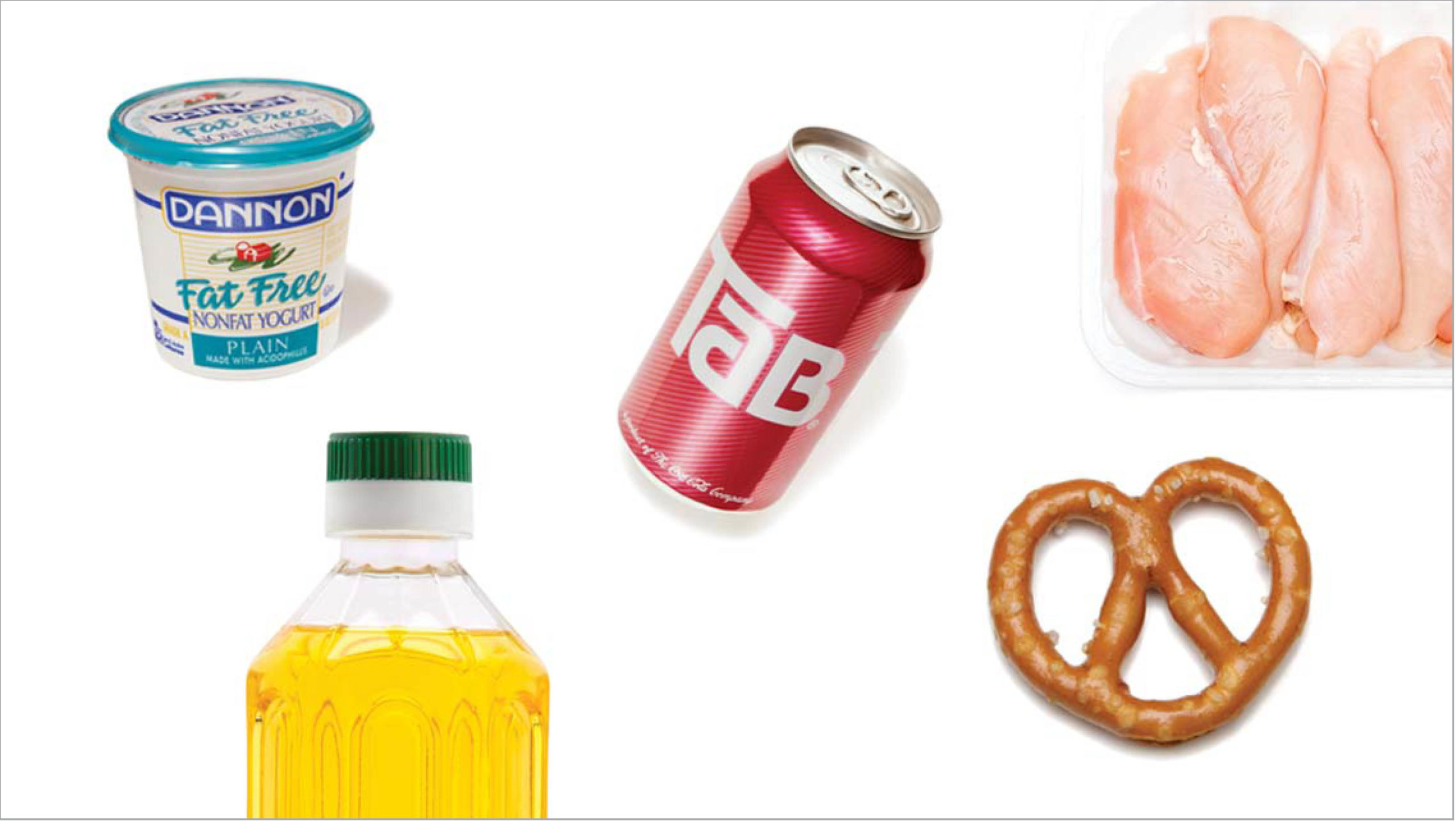Food blogger Vani Hari (a.k.a. the Food Babe) is not a big fan of the artificial dyes that permeate such items as flavored yogurt, canned white frosting, and grocery-store meats. So, when she discovered that many food manufacturers use only natural dyes in the European versions of their products, she decided to take action.
“I felt like there was injustice in the way food companies are producing safer, better products overseas than here in America,” she says. “It’s a double standard.”
Kraft, for instance, doesn’t use artificial food dyes in its Macaroni & Cheese Dinners in other countries, such as the United Kingdom. Upset by the discrepancy, Hari collected more than 350,000 signatures on a Change.org petition, launched in March 2013, to compel the company to take Yellow No. 5 and Yellow No. 6 out of its American version. Last fall, Kraft agreed to use natural dyes, including paprika, for its newer mac-and-cheese products, such as its SpongeBob SquarePants meal. The company also promised “to make improvement where we can.”
While some natural-food advocates celebrate Kraft’s shift as a victory, others point out that the original mac-and-cheese, in the iconic blue box, still uses artificial colors — as do a vast array of other processed foods, including soda, crackers, candy, cereal, lasagna, and ice cream.
Because the only purpose of artificial food dyes is cosmetic, health advocates say removing them should be a no-brainer. Governments have been reluctant to get involved, however, especially in the United States, where the FDA has approved nine artificial food colors, mostly derived from petroleum.
In Europe, a warning label has been required since July 2010 on foods that contain certain artificial colors, prompted by the 2007 landmark Southampton Study, in the U.K., which found a link between food dyes and behavioral problems in children.
The upshot? While McDonald’s strawberry sundaes in England are tinted with real strawberries, the American version gets its hue from Red No. 40.
In Europe, the precautionary principle — limiting exposure to possible harm when scientific evidence is inconclusive — is often the law. The FDA, however, operates from an “innocent until proven guilty” standpoint.
In Europe, the precautionary principle — limiting exposure to possible harm when scientific evidence is inconclusive — is often the law.
In 2011, it held a hearing on artificial food colors, sparking hope among advocates of real food. The agency acknowledged that the dyes may have negative effects on some kids, but since it didn’t find absolute proof that artificial dyes cause hyperactivity, it ruled eight to six that companies could continue using the dyes in foods without warning labels.
Many health experts cried foul. They argued that the FDA should adopt the precautionary principle, instead of searching for proof that’s almost impossible to come by without expensive funding for extensive studies.
“The precautionary principle should govern every environmental chemical.”
“The precautionary principle should govern every environmental chemical,” says Bernard Weiss, PhD, University of Rochester, N.Y., professor of environmental medicine. “It applies to drugs: The FDA grants approval for a new drug only after exhaustive screening for adverse effects. That is how the precautionary principle works. With food dyes, to which vastly more individuals are exposed, no such rule applies, which I think is scandalous.”
Jim Stevenson, PhD, an emeritus professor of developmental psychopathology who led the Southampton Study, agrees: “The precautionary principle has to be considered in a cost–benefit context. If there is no benefit from the dyes apart from marketing, then, yes, a higher standard of safety should apply.”
A Public-Health Issue
Additives have been used to color food for hundreds of years — and governments have attempted to regulate the usage nearly as long. In the 1200s, England’s King Edward I decreed that any baker who colored his bread white would be dragged through the streets with the fraudulent loaf hanging around his neck.
Today’s rhetoric about food dyes is much tamer, as is the regulation, and, as a result, exposure is rising. In the past 60 years, in fact, the amount of artificial dye used in food in the United States has increased fivefold.
The first inkling that artificial food dyes have a downside came in the 1970s, when pediatric allergist Ben Feingold asserted that hyperactive kids who eliminated artificial flavors and colors from their diets showed a remarkable improvement in behavior. Since then, other researchers have confirmed that many kids with hyperactivity experience a worsening of symptoms when they consume artificial dyes.
The first inkling that artificial food dyes have a downside came in the 1970s, when pediatric allergist Ben Feingold asserted that hyperactive kids who eliminated artificial flavors and colors from their diets showed a remarkable improvement in behavior.
In 2012, a meta-analysis of 24 studies showed that as many as 33 percent of kids with ADHD may benefit from diets free of artificial food colors and additives. Some experts even think that these dyes may push borderline kids over the threshold toward a diagnosis of ADHD in the first place. In other words, they say, some children would not develop ADHD if they weren’t consuming artificially colored foods.
“Parents need to be aware that some children, at the amounts found in everyday kinds of food items, respond with aberrant behaviors,” Weiss says. “Should such behaviors become a common occurrence, parents might undertake a little experiment in order to determine the possibility of a connection.”
Even more alarming, the Southampton Study showed for the first time conclusively and scientifically that artificial food colors and additives can affect the behavior of kids who don’t have any proclivities toward ADHD. Researchers examined the hyperactivity levels of about 300 kids selected from the general population to represent the full range of behavior, from normal to hyperactive. Some kids ate a totally additive-free diet, including additive-free fruit juice, while the rest were given a drink containing artificial food colors and sodium benzoate preservative.
The families weren’t told which drink their kids were getting. Reports from the children’s teachers and parents on the children’s impulsivity, attention, and movement showed that the kids were more hyperactive when they consumed the drinks containing artificial colors and additives.
“That transformed it from an ADHD issue to a public-health issue,” says Gene Arnold, MD, MEd, Ohio State University professor emeritus of psychiatry. The results prompted the European Union (EU) to mandate warning labels on foods and drinks that contain any of the six colors used in the study. (The Southampton team chose to study those six colors because they are commonly found in “children’s food,” but the EU is also currently reassessing all the other artificial food colors it permits.)
The amount of dyes given to children in the Southampton Study was actually well below what many American children consume, according to Laura Stevens, MS, a Purdue nutritional science research associate who studies the link between food dyes and hyperactivity.
Some food dyes — including the three most common ones — can provoke hypersensitivity in certain children and adults.
While the behavioral effects are most often discussed, artificial food dyes may have adverse physical effects as well, the Center for Science in the Public Interest (CSPI) documented through a review of various studies. Some food dyes — including the three most common ones — can provoke hypersensitivity in certain children and adults (see “9 Questionable Artificial Food Colors,” below).
Animal studies, meanwhile, have shown a link to other health problems such as reproductive issues and kidney disease. This prompted the European Food Safety Authority to further decrease recommended daily allowances of several artificial dyes and recommend further safety tests.
Putting Pressure on Food Manufacturers
While a federal ban on artificial food colors doesn’t seem imminent, many advocates hope the situation will change as a result of public pressure.
In the same way as big corporations have responded to public demand — McDonald’s now offers local-food choices on its menus, and Walmart has started stocking organic foods —Arnold thinks companies may voluntarily switch to natural dyes if more folks request them. (For more on natural dyes, see “Natural Food Dye Alternatives,” below.)
“Companies might do it for good will, to get ahead of the curve,” he says. “They are responsive to what the public wants. After all, they’re in business to sell things.”
CSPI executive director Michael Jacobson agrees. Public pressure “seems to be the way, unless the FDA wakes up. And we haven’t seen much sign of that,” he says. He adds that although natural colorings are significantly more expensive, they represent, overall, such a “trivial cost of the foods that switching to natural colorings actually shouldn’t affect the price of the food at the store.”
There are profits to be made as well. Vani Hari’s campaign against Kraft brought the issue of dyes such prominence that sales of Annie’s Homegrown boxed mac and cheese — which uses natural annatto extract for color — are up 14 percent over last year. Hari says she wants to continue holding companies accountable: “We were able to shift the marketplace by amassing an army of people who care about what they eat.”
If you’re determined to play it safe and avoid these dyes, there’s good news: The more whole, nutritious, unprocessed foods you eat, the less likely you are to run into artificial dyes.
If a product doesn’t look like it’s from nature, be wary, Hari advises. And always read labels. Avoid anything with terms such as “FD&C Lakes” (a type of dye pigment), “Citrus Red,” or “artificial color.” Some stores have already done the vetting for you: Most natural markets, including co-ops, Whole Foods Markets, and Trader Joe’s, use only natural dyes in their processed foods.
While some food manufacturers protest that natural colors aren’t as vibrant and attractive as artificial colors, Arnold counters that even the possibility of a health risk would merit banning them, since they offer no nutritional value.
Arnold adds that he has also seen firsthand that people adjust quickly to the changing appearance of food. His father made his living selling meat, including “the best wieners in the world,” he says. “But they looked sort of gray instead of red because they didn’t have any artificial color in them. When new people moved to town and were hesitant to buy them, my father would say, ‘Take them home and taste them. I’ll give you your money back if you don’t like them.’ Once they tried them, they came back asking for gray wieners.”
In the end, taste trumps color.
9 Questionable Artificial Food Colors
The FDA approves of the following nine artificial food colors, as well as caramel coloring, for use in human food. The three most common dyes in the United States — Red No. 40, Yellow No. 5, and Yellow No. 6 — require a warning label in European Union (EU) countries, which states that they “may have an adverse effect on activity and attention in children.”
“It’s unfortunate that the FDA has not taken any action — especially after concluding [in 2011] that dyes do, in fact, affect some children,” says Michael Jacobson, PhD, executive director of the Center for Science in the Public Interest.
- Blue No. 1 : Often found in frosting, ice cream, packaged soup mixes, and products with blue-raspberry flavors
- Blue No. 2 : Often found in candy, cereal, ice cream
- Citrus Red No. 2: Not approved for use in the EU. Allowed for use only in coloring the skins of oranges
- Green No. 3 : Not approved for use in the EU. Often found in canned peas, mint jelly, sauces, mixes for baked goods
- Orange B: Not approved for use in the EU. Allowed for use only in frankfurter and sausage casings
- Red No. 3: Requires warning label in the EU. Banned in the United States for topical use. Often found in Popsicles, cake-decorating gels, candy, chewing gum
- Red No. 40: Requires warning label in the EU. Often found in soft drinks, sports drinks, cocktail mixers, fruit snacks, yogurt, breakfast cereals, lasagna, jam, candy, hot dogs, beef jerky, salad dressings, chips, pizza
- Yellow No. 5: Requires warning label in the EU. Often found in ice cream, Popsicles, hard candy, pudding, Jell-O, cake mixes, soft drinks, sports drinks, chips, gum, jam, mustard, cereal, boxed rice dinners, noodles
- Yellow No. 6: Requires warning label in the EU. Often found in orange soda, jam, lemon curd, packaged soup mixes, chips, ice cream, noodles
- Caramel coloring: People around the world consume more caramel coloring than any other food-coloring ingredient. Although the word “caramel” seems innocuous enough, there are actually four types of the coloring, two of which are created by using ammonia. The coloring used in some sodas, for example, is made by reacting ammonium and sulfite compounds with sugars, which produces 4-Methylimidazole, or 4-MEI, shown to cause cancer in mice and rats. Caramel coloring has also been linked to hypertension.
Although caramel coloring is not technically considered an artificial dye by the FDA, the Center for Science in the Public Interest has petitioned the FDA to ban certain forms of it due to health concerns. The FDA responded to the petition with a statement that a person would have to consume 1,000 cans of soda a day to reach the dose that caused cancer in rodents.
California has added 4-MEI to its list of potential carcinogens requiring a warning label on products that contain a certain level. Since then, Coca-Cola, PepsiCo, and other soft-drink makers have reduced the levels of 4-MEI in their products. A recent analysis by the Center for Environmental Health showed, however, that Pepsi products still contain 4-MEI at a level of four to eight times California’s recommended safe amount.
Natural Food Dye Alternatives
As the demand for natural food dyes increases, more and more alternatives are being introduced. Below are just a few of the common natural dyes used in food:
Annatto
Color: Reddish-orange
Made From: The seed of the annatto tree
Used In: Cheese, butter, boxed rice dinners
Betanin
Color: Red
Made From: Beets
Used In: Tomato paste, sauces, jam, ice cream, cereal
Turmeric
Color: Orange-yellow
Made From: Turmeric root
Used In: Mustard, cheese, butter, salad dressing
Elderberry Juice
Color: Purple-blue
Made From: Elderberries
Used In: Ice Cream, yogurt, juice, cereal, granola bars, muffins
Black Carrot Juice
Color: Peach-red
Made From: Black carrots
Used In: Yogurt, juice
Saffron
Color: Yellow
Made From: Saffron crocus flowers
Used In: Boxed rice dinners, baked goods
Red Cabbage
Color: Blue
Made From: Red cabbage
Used In: Icings, cake batters, cookies
Carrot Oil
Color: Orange
Made From: Carrots
Used In: Sauces
Purple Sweet Potato Juice
Color: Red to purple
Made From: Purple sweet potatoes
Used In: Beverages
This article originally appeared as “The Truth About Artificial Food Colorings.”




This Post Has 0 Comments